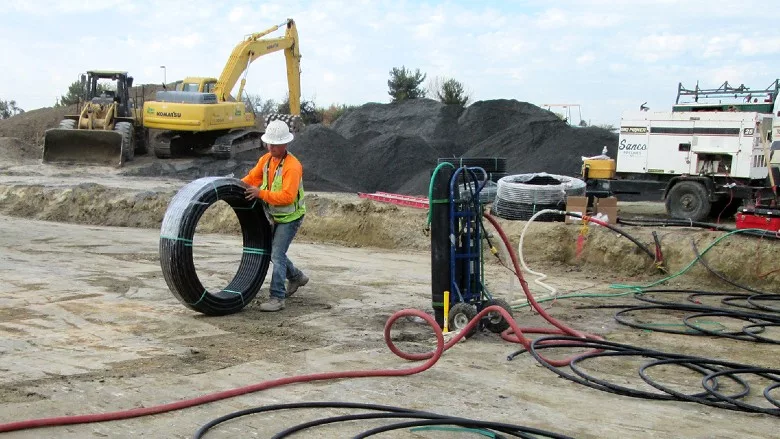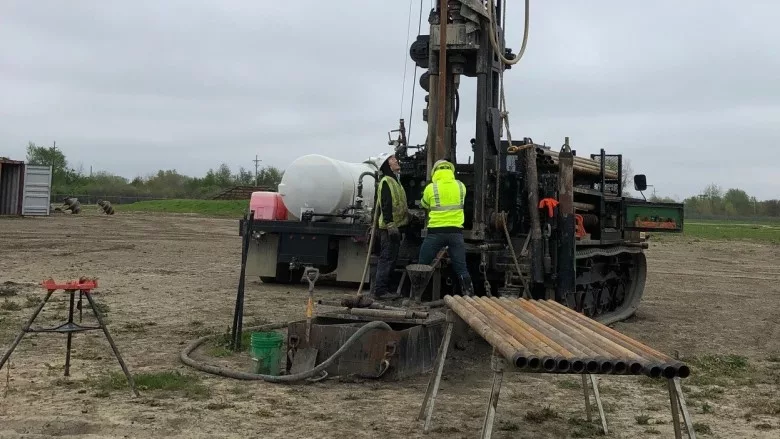The Pros, Cons of Partnerships for Drilling Companies
Partnerships without Collaboration, Shared Vision Won’t Last

Want to scale up to the point where you can bid higher-value (and higher return) projects? The right partner might help.
Source: U.S. Energy Department / Public Domain

Federal incentives for geothermal create a lot of business, but you may need capital investment to fully leverage those opportunities.
Source: The Driller file

Partnership goals often include expanding service offerings or service footprint, or both.
Source: Dave Bowers
To be successful and scale a company with a partner, we must share our vision and expectations for growth. Scaling is about aligning expectations. So, how do we create an ideal partnership with an investor or another company?
For legacy drilling companies, the value is in their real estate and assets. A consistent book of business with proof of continual growth is a considerable asset with high value. Beyond those measurable points, many drilling companies base their value on regional history, relationships with clients and homeowners, and the number of completed projects — all creating a picture of credibility through experience. How do you put a value on that experience and our tribal industry knowledge? In the book “Winning” by the legendary Jack Welch, he states: “A merger can feel like a death. Everything you’ve worked for, every relationship you’ve forged — they’re suddenly null and void.” (“Winning”; Welch, Jack, with Welch, Suzy; HarperCollins; 2005; p. 218)
However, the goal is not death but the ability to scale beyond a family-owned business into an independent monument to your legacy. If you don’t need the money and help to rise, you don’t need a partner. If you do need the money and help, it’s a fallacy to believe you can have those things without hearing from the partner. A partnership can meet a quick death when either party thinks it can operate silently without collaboration.
Therefore, when you approach a partner, you must do so with a blend of hard asset value and the theoretical value of your tribal knowledge and experience. How the hell is that possible? You prove it. On a car ride from Salt Lake City to Elko, Nevada, Bob Brown, my business development manager at Baroid IDP, gave me some of the best advice in this regard. “Young man,” he told me, “to prove your worth and knowledge, you must write it down. If it isn’t documented on paper, it never happened.” Remember, the reason for a partner is growth; you need help to scale. Once you establish your value, continue to substantiate it with integrity in every action you do.
The partnership must be the right collaboration. The vision for the future must aligned with the actual expectations of what the given region will yield. Is the vision is to become the largest water well drilling company by drilling 50% more projects than any other provider in the next 5 years. How do you hit that goal? Is more production key to growth and profitability?
I think of a proud legacy drilling company I know of that chose to sell to a large construction company rather than merge. The vision? Diversify the large construction company’s capabilities and services in a market they already shared. The owners of the drilling company sold and rode off into the sunset. The big company left existing management in place, minus the owners. Existing management collaborated with the new owners to create a realistic growth plan for the next year and up to five years. In this situation, the new partner trusted and valued the tribal knowledge of existing management. It was an exciting time, with new plans and a budget with capital to purchase the right equipment to grow.
Sadly, the partnership failed before the fourth year. How did such a perfect opportunity for growth and profit fail? It failed by continuing to operate the business as if it was a partnership. The purchase of the drilling company was an acquisition with trust — trust that, with the right amount of knowledge and more capital, it would grow like other acquisitions the large company had made to become a larger service provider.
Good business sense can prove rare in the drilling industry. Is it a way to make a great life for you and your family? Yes! Achieving at least minimal success becomes a balance of company benefits and the quality of life that makes running a company appealing. However, becoming one piece of a multifunctional company comes with responsibilities and expectations. The expectation is that projects will be profitable and only a few a year. The failure between these two companies clearly defined different ideas about growth and the level of risk taken to achieve that growth.
In drilling, we have high equipment costs, operational costs and expectations to maintain a schedule with the next customer. This incentivizes companies to do whatever it takes to complete a bad project.
I think of the old joke: How do you make a million dollars in drilling? You start with two million dollars. When a company encounters a failing job, the typical solution involves spending whatever it takes to finish in hopes of moving on to the next job and an opportunity to recover profit. In drilling, we have high equipment costs, operational costs and expectations to maintain a schedule with the next customer. This incentivizes companies to do whatever it takes to complete a bad project.
Now consider the new acquisition where the big company believes that, with just a bit more capital and a few more months of transitioning, their new drilling group will start operating smoothly. A few months turned into a couple of years and a revenue drag on the company’s overall performance. You cannot build scale in the drilling industry on hope and luck. Nor can scaling with a new partner rest on continuing to operate the business the same way it always had, just with a bigger credit line.
If you think building an “independent monument” to your legacy is possible without selling or merging, then why transition? For both parties involved, the answer is success. What motivates this joining of forces? I have witnessed three reasons for a merger or acquisition.
- First and most common, companies look for strategic gains in market share. Two companies share capabilities, create a partnership, and move from local to regional growth.
- Second, companies attempt to diversify their portfolio with a business that complements their existing markets. A successful company sees the value in expanding its capabilities by offering more services. Ideally, the owner becomes part of the leadership team and aids in the transition. Alternatively, the owner walks away, and the new company assimilates the business into its management structure.
- The third reason — incredibly popular right now — is venture capital wanting to invest in desirable natural resource markets. It started with the allure of fossil fuels and minerals, being part of the exploration and the big payoff. However, today’s 21st-century gold “big allure” is civilization infrastructure: water, underground utilities and geothermal.
Regardless of the reason for transitioning to a partnership structure, whatever that partnership looks like, I have simple advice for both parties:
- Work together to maximize the capabilities of existing equipment and personnel strengths.
- Identify profitable projects with moderate risk that aid in building the companies’ qualifications and portfolio of successful jobs.
- When developing a vision plan with budget and growth expectations, make it collaborative. Get everyone involved to work through and agree on the details. It cannot be structured as “here is the growth plan from corporate” or “here is our budget from our decentralized location.”
Success depends on understanding the risk and maximizing growth through people and equipment capabilities. Next up in part three, I wrap up this series by outlining a regional project risk assessment to use for forecasting that maximizes equipment utilization and return on investment.
Looking for a reprint of this article?
From high-res PDFs to custom plaques, order your copy today!




